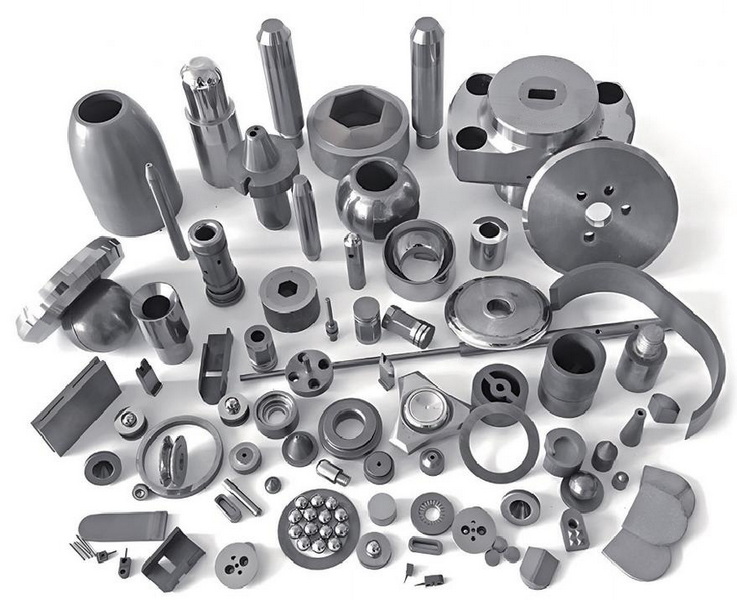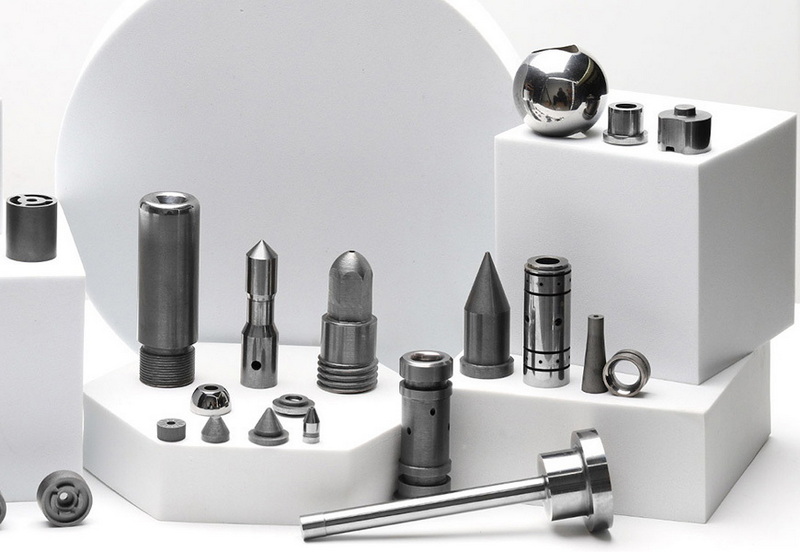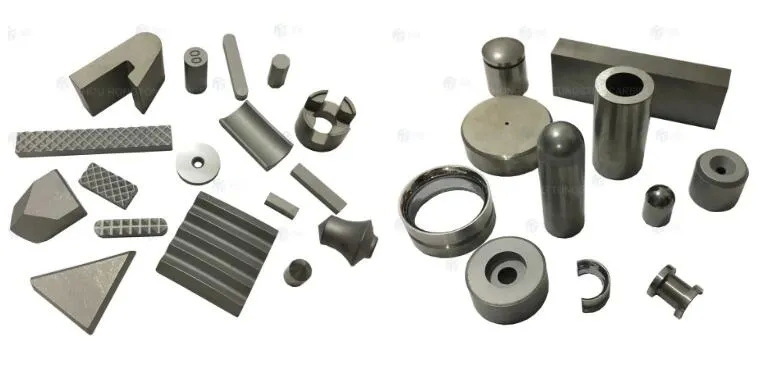Content Menu
● Introduction to Cemented Carbide
>> Composition and Properties
>> Applications of Cemented Carbide Products
● Factors to Consider When Choosing Cemented Carbide Products
>> 1. Application Requirements
>> 2. Material Composition
>> 3. Grain Size
>> 4. Manufacturing Process
>> 5. Cost and Availability
● Types of Cemented Carbide Products
● Advanced Applications and Innovations
>> 1. 3D Printing and Additive Manufacturing
>> 2. Coatings and Surface Treatments
>> 3. Sustainability and Recycling
● Case Studies: Successful Applications of Cemented Carbide
>> 1. Mining Industry
>> 2. Aerospace Industry
>> 3. Medical Devices
● Conclusion
● FAQ
>> 1. What are the primary applications of cemented carbide products?
>> 2. How does the composition of cemented carbide affect its properties?
>> 3. What manufacturing processes are used for cemented carbide?
>> 4. What are the advantages of using cemented carbide over other materials?
>> 5. How can I ensure the quality of cemented carbide products?
● Citations:
Cemented carbide products, known for their exceptional hardness, toughness, and wear resistance, are widely used in various industrial applications, including cutting tools, mining equipment, and wear parts. Choosing the right cemented carbide product can significantly impact the efficiency and cost-effectiveness of operations. This article will guide you through the process of selecting the best cemented carbide products for your needs.

Introduction to Cemented Carbide
Cemented carbide, also known as tungsten carbide, is a composite material consisting of tungsten carbide particles bonded together by a metallic binder, typically cobalt. The combination of these components provides a unique balance of hardness and toughness, making cemented carbide ideal for demanding applications.
Composition and Properties
The composition of cemented carbide can vary, with tungsten carbide content typically ranging from 70% to 97% by weight. The grain size of the carbide particles averages between 0.4 and 10 μm, which affects the material's properties such as hardness and toughness. The addition of other carbides like titanium carbide (TiC) and tantalum carbide (TaC) can enhance specific properties for different applications.
Applications of Cemented Carbide Products
Cemented carbide products are used in a variety of fields:
- Cutting Tools: Carbide tools are preferred for machining hard materials due to their ability to withstand high temperatures and maintain a sharp cutting edge.
- Mining and Drilling: Cemented carbide is used in drill bits and other mining tools for its impact resistance and durability.
- Wear Parts: Components like nozzles, bushings, and pump parts benefit from the wear resistance of cemented carbide.
- Medical and Industrial Fields: High precision and durability make cemented carbide suitable for medical instruments and industrial components.
Factors to Consider When Choosing Cemented Carbide Products
1. Application Requirements
- Hardness and Toughness: For cutting tools, higher hardness is often preferred, while for wear parts, a balance between hardness and toughness is crucial.
- Corrosion Resistance: In environments where corrosion is a concern, selecting a product with appropriate coatings or binder composition can be beneficial.
2. Material Composition
- Tungsten Carbide Content: Higher WC content generally increases hardness but may reduce toughness.
- Binder Material: Cobalt is common, but other binders like nickel or iron can offer different properties.
3. Grain Size
- Fine Grain: Offers higher hardness and is suitable for precision cutting tools.
- Coarse Grain: Provides better toughness and is often used in wear parts.
4. Manufacturing Process
- Sintering and HIP: These processes affect the final density and uniformity of the product.
5. Cost and Availability
- Budget Constraints: Balancing performance with cost is essential for many applications.
- Supplier Reliability: Ensure that the supplier can consistently deliver high-quality products.
Types of Cemented Carbide Products
- Rods and Blanks: Used for manufacturing custom tools and parts.
- Inserts and Tips: Commonly used in cutting tools and mining equipment.
- Wear Parts: Nozzles, bushings, and other components designed for high wear resistance.

Advanced Applications and Innovations
1. 3D Printing and Additive Manufacturing
Recent advancements in 3D printing have allowed for the creation of complex cemented carbide structures that cannot be produced through traditional manufacturing methods. This technology offers improved precision and customization capabilities.
2. Coatings and Surface Treatments
Applying coatings or surface treatments can enhance the performance of cemented carbide products by improving wear resistance, reducing friction, or increasing corrosion resistance.
3. Sustainability and Recycling
As environmental concerns grow, the recycling of cemented carbide products becomes increasingly important. Recycling can help reduce waste and conserve resources, contributing to a more sustainable industry.
Case Studies: Successful Applications of Cemented Carbide
1. Mining Industry
In the mining sector, cemented carbide drill bits have significantly increased drilling efficiency and reduced maintenance costs due to their durability and resistance to wear.
2. Aerospace Industry
Cemented carbide components are used in aerospace for their high precision and ability to withstand extreme conditions, contributing to the reliability of critical systems.
3. Medical Devices
In medical applications, cemented carbide is valued for its biocompatibility and durability, making it suitable for surgical instruments and implants.
Conclusion
Choosing the best cemented carbide products involves understanding the specific requirements of your application, including hardness, toughness, corrosion resistance, and cost. By considering these factors and selecting products from reliable suppliers, you can optimize performance and efficiency in various industrial settings.

FAQ
1. What are the primary applications of cemented carbide products?
Cemented carbide products are primarily used in cutting tools, mining equipment, wear parts, and other industrial applications where high hardness and wear resistance are required.
2. How does the composition of cemented carbide affect its properties?
The composition, particularly the tungsten carbide content and binder material, significantly affects the hardness, toughness, and corrosion resistance of cemented carbide products. Higher WC content increases hardness, while the binder affects toughness.
3. What manufacturing processes are used for cemented carbide?
Cemented carbide is typically manufactured through sintering or hot isostatic pressing (HIP), which compacts the carbide particles and binder into a dense, uniform material.
4. What are the advantages of using cemented carbide over other materials?
Cemented carbide offers superior hardness, wear resistance, and thermal stability compared to traditional materials like high-speed steel, making it ideal for demanding applications.
5. How can I ensure the quality of cemented carbide products?
Ensure that the supplier follows strict quality control measures, and consider factors like material composition, grain size, and manufacturing process when selecting products.
Citations:
[1] https://www.hyperionmt.com/en/Resources/materials/cemented-carbide/
[2] https://www.allied-material.co.jp/en/techinfo/hard-metal/use.html
[3] https://pdf.directindustry.com/pdf/zhuzhou-jinggong-cemented-carbide-co-ltd/jinggong-cemented-carbide/228756-958975.html
[4] https://en.wikipedia.org/wiki/Cemented_carbide
[5] https://www.besttungsten.com/blogs-detail/understanding-cemented-carbide-components-and-their-industrial-applications
[6] https://patents.google.com/patent/WO2017055332A1/en
[7] https://www.allied-material.co.jp/en/techinfo/hard-metal/features.html
[8] https://www.sanalloy.co.jp/en/cemented_carbide/
[9] https://patents.google.com/patent/WO2012045815A1/en
















